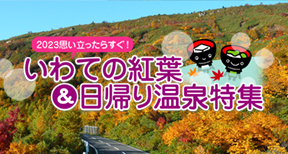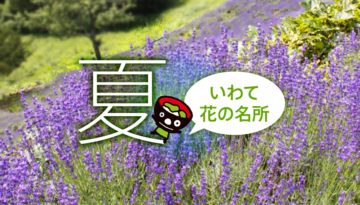
Let's go on a journey to experience the history and great charm of "Iron Town, Kamaishi", which supported Japan's modernization!
INDEX
“Sites of Japan’s Meiji Industrial Revolution: Iron and Steel Manufacturing, Shipbuilding, and Coal Industry,” including the Kamaishi Hashino Iron Mine (Hashino Blast Furnace Ruins and Related Sites)” was held at the 39th Annual Meeting in Bonn, Germany on July 5, 2015. It was registered as a World Heritage Site by the World Heritage Committee.
Kamaishi is home to many remains of the early modern steel industry, including the Hashino Blast Furnace Ruins, Japan’s oldest Western-style blast furnace, built under the guidance of Takato Oshima, the father of modern steel manufacturing. The passion of our predecessors who moved the times is still alive.
Let’s go on a journey to experience the history and great charm of “Iron Town, Kamaishi”, which supported Japan’s modernization!
*Hashino Iron Mine is a general term for iron mines and steel mills, which are comprised of iron ore mining sites, transportation routes, and blast furnace sites.
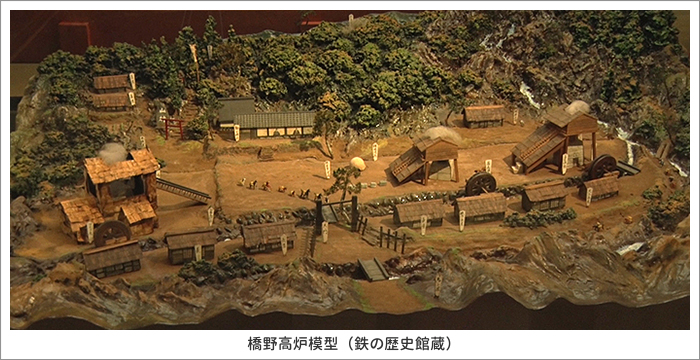
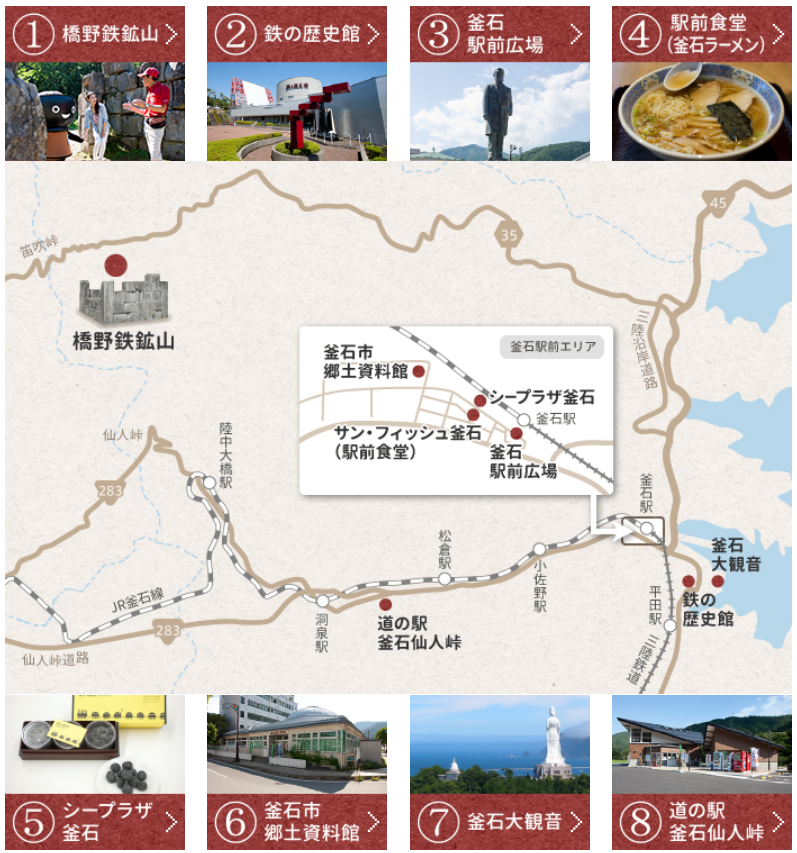
Hashino Iron Mine
The Hashino Blast Furnace Ruins, the oldest existing Western-style blast furnace in Japan, was built between 1858 and 1866. It was built at the end of the Edo period to supply pig iron for cannons in order to counter Western powers that were pressuring Japan, which had been isolated from the rest of the world, to open up to the world. The construction was directed by Takato Oshima, a feudal retainer of the Morioka clan who was later called the father of modern steelmaking, and the temporary blast furnace (currently the No. 3 blast furnace) was successfully put into operation in 1987. This was the beginning of Hashino Iron Mine.
After the Ansei Great Prison, closure was considered for a time, but since it was a powerful iron mine, the blast furnace was directly managed by the Nanbu domain, and the first and second blast furnaces were built, and the temporary blast furnace at Takato was operated as the third blast furnace. it was done.
Until the end of operations in 1894, there were 13 blast furnaces in seven locations in the Kamaishi area, but Hashino, which was the largest iron mine in Japan at the time, was the epitome of modern Japan from the end of the Edo period to the Meiji period. It can be said to be the “birthplace of modern steelmaking,” which supported the steelmaking industry and contributed to the development of the country.

Ichiban blast furnace
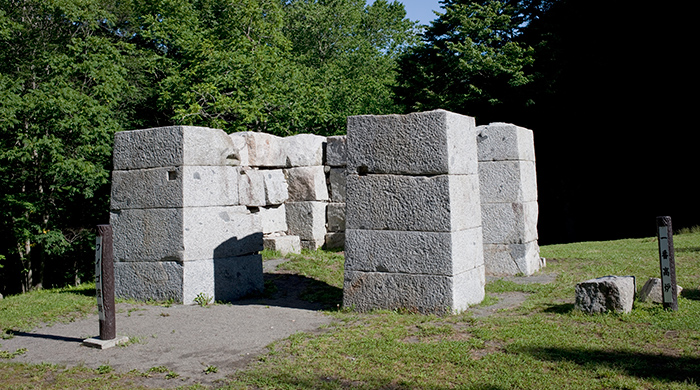
There is one level of granite foundation, and above that there are four levels of granite stonework approximately 5.8m square and 2.4m high. On the south side, there was a fuigoza for ventilation, and on the east side there was a hot water outlet, and at that time there was a wall made of sweet stone piled on top of the stonework and plastered. Inside the stone-built furnace, a refractory brick furnace was built, approximately 7.8 meters high, and had a covered roof.
No. 2 blast furnace
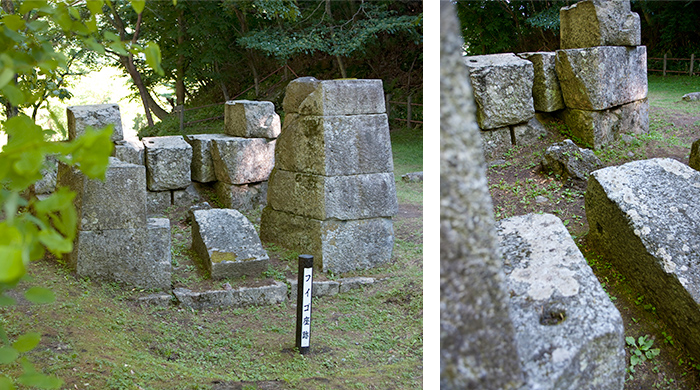
There is one level of granite foundation, and above that there are four levels of granite stonework approximately 4.8m square and 2.4m high. The remaining drawings show a nine-tiered stone set, which was approximately 7.9 meters high at the time. The position of the Figoza and the hot water outlet is the same as that of the Ichiban blast furnace. In the center of the blast furnace, there is a lump of pig iron that has accumulated at the bottom of the furnace and has not flowed completely.
Third blast furnace


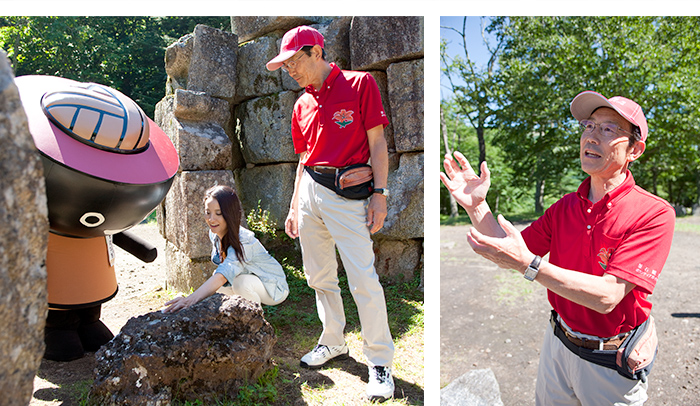
The oldest Western-style blast furnace in existence, built as a temporary blast furnace by Takato Oshima. There are two tiers of granite foundations, and five tiers of approximately 2.8m stonework are stacked on top of that, with vertical granite stones placed at the four corners. At that time, it was approximately 7.0m high and is thought to have been the basic form of an early blast furnace. There is also a large lump left at the bottom of the No. 3 blast furnace, and when you bring a magnet close to it, it pops! You can see that it is a block of iron.
The person who guided us this time was Mr. Fujiwara from the Kamaishi Tourism Volunteer Guide Association. By reservation and for a fee, the group can be accompanied by a veteran guide who knows everything about the history of the Hashino Iron Mine and Kamaishi.
others
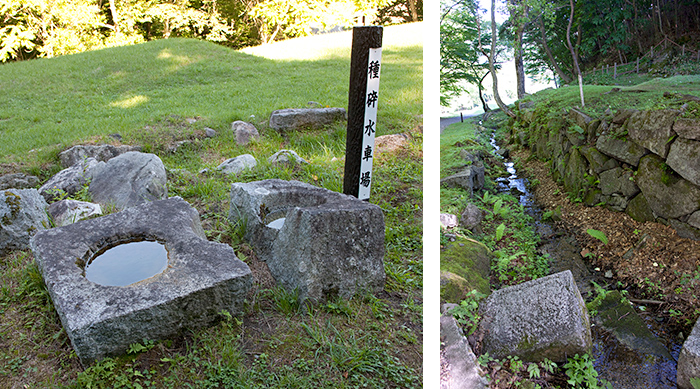
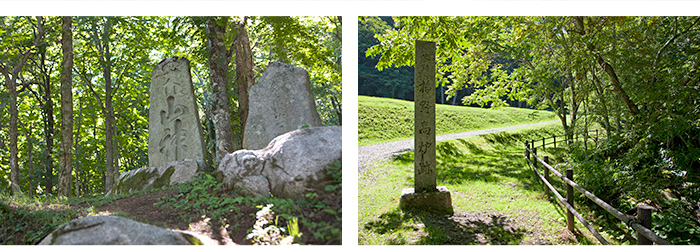
In the surrounding area, there are the ruins of a seed burner, a seed storage yard, and a seed water mill where the iron ore transported from the mining site was crushed, the remains of the Mihifusho where the administrative management of the blast furnace was performed, and the remains of the tenement houses of blacksmiths and carpenters. It is left behind. The ruins of a waterway drawn for the water wheel that powered the blast furnace’s blower, and the splendid monument to the mountain deity, remind us of the bustle of its heyday, when as many as 1,000 employees worked there.
Kamaishi Tourism Volunteer Guide Association Basic Information
- Reservation required
- Usage fee: Charged *Reservation required
- Contact: 0193-22-5835 (Kamaishi Tourism and Products Association *Association holidays: 1st, 3rd, and 5th Tuesdays)
- Homepage: Kamanavi
Hashino Iron Mine Information Center
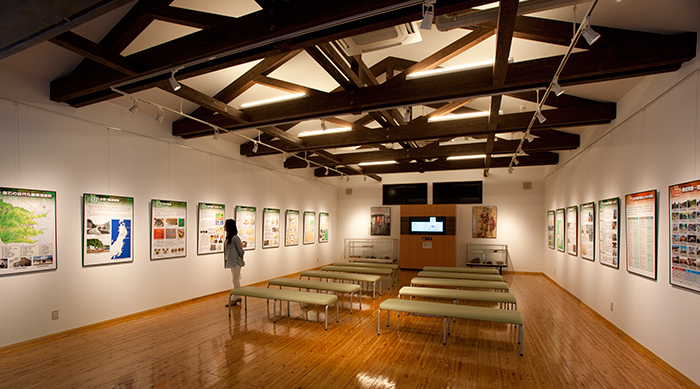
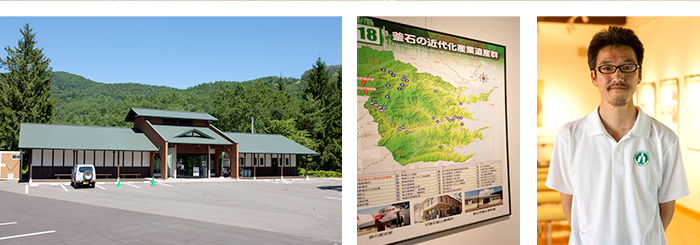
This guidance facility was opened in 2013 on land adjacent to the Hashino Blast Furnace ruins ahead of its registration as a UNESCO World Heritage Site. The contents of Hashino Iron Mine are explained in an easy-to-understand manner through panel exhibitions and three types of videos.
Mr. Mori from Kamaishi City says in front of the information center that he would like people to stop by when they tour the blast furnace ruins. It is a facility where you can easily visualize what it was like back then and deepen your understanding.
Hashino Iron Mine Information Center
Chaya on the mountain pass
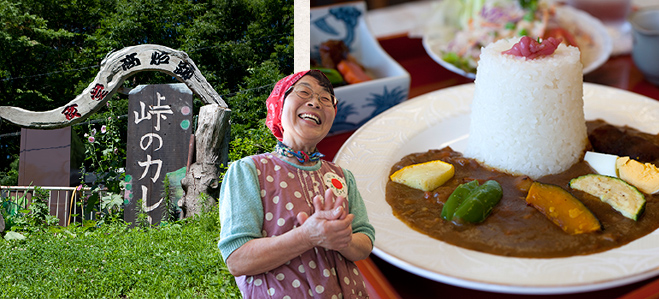
“Toge no Chaya” is about a 2-minute walk from the Hashino Blast Furnace Information Center. Even before it was registered as a World Heritage Site, it was offering “Toge no Curry”. The rice is made into a tower shape to represent the Hashino blast furnace, and the handmade curry is served with seasonal vegetables harvested in the home’s field, and the fragrant roux is a popular dish.
The owner, Shizuko Ogasawara, runs the restaurant by herself, so reservations are required, but the deliciousness keeps the customers coming back for more! The cute chorogi on top of the rice resembles the fire of a blast furnace. These are homemade pickles grown in Mr. Ogasawara’s field.
Chaya on the mountain pass

- Address
- 2-38 Hashinocho, Kamaishi City
- Inquiries
- 0193-57-2005
- Access
- Approximately 60 minutes by car from Kamaishi Expressway Miyamori IC
- Business Hours
- 9:00-15:00 Irregular holidays *Reservation required
iron history museum

The person who welcomed us was the deputy director, Mr. Yamashita. Inside the museum, there are eight corners exhibiting the achievements of our predecessors, including Takato Oshima, and the relationship between Kamaishi and iron through models and materials. A must-see is the comprehensive performance theater, which features a full-scale model of the Hashino Blast Furnace Ruins No. 3 blast furnace, as well as powerful sound, light, and images! You can enjoy learning about the ironworks of those days and the history of ironmaking in Kamaishi using 3D images.
Kamaishi station square
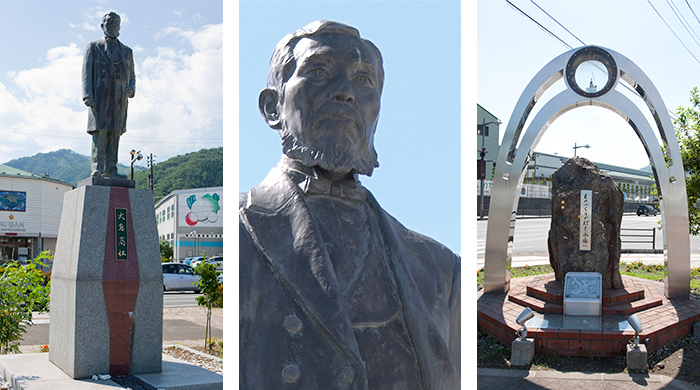

Standing in front of Kamaishi Station is a statue of Takato Oshima, the father of modern steel, who watches over Kamaishi, the “Iron City”, and a statue of Takato Oshima, the father of modern steel manufacturing, stands in front of Kamaishi Station. The “Iron Monument” was built in . The monument’s fire was extinguished due to flooding caused by the tsunami caused by the Great East Japan Earthquake, but it was relit on December 1, 2011, the Iron Memorial Day, and now shines as a symbol of Kamaishi’s manufacturing history.
In the same plaza, there is also the Kamaishi Revival Bell, which was built by citizen volunteers as a symbol of Kamaishi’s revival. Anyone can freely ring the bell, which is supported by an arm shaped like hands clasped together.
Kamaishi station square
- Address
- 22-5 Suzuko-cho, Kamaishi City, Iwate Prefecture
- Access
- 1 minute walk from JR Kamaishi Station
Kamaishi Ramen/Ekimae Shokudo
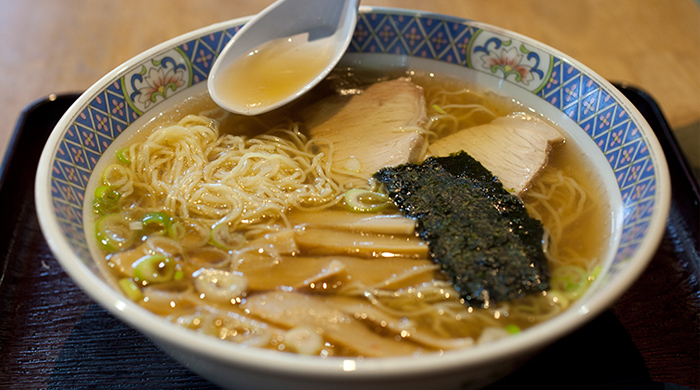
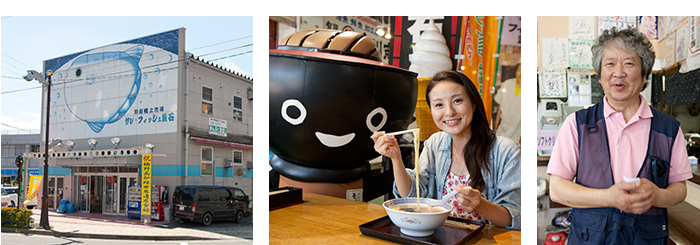
When you think of Kamaishi ramen, you think of ultra-thin curly noodles and a clear amber soup. The thin noodles are said to have been created so that busy workers at the Kamaishi Steel Works could eat them quickly. It is a nostalgic taste that has been loved not only by locals but also by people visiting Kamaishi.
“Ekimae Shokudo” in Ekimae Hashigami Market Sun Fish Kamaishi is open from early morning in a corner lined with fresh fish stores. Enjoy the atmosphere of the market while sipping on Kamaishi Ramen. The chewy noodles and simple yet flavorful soup go perfectly together! “This is a homemade soup,” the owner, Mr. Hachiman, told me.
The luxurious “uni fried rice” and “seafood ramen” are also must-try items on your next visit.
Station cafeteria
- Address
- 2-1 Suzukocho, Kamaishi City, Ekimae Hashigami Market Sun Fish Kamaishi
- Inquiries
- 0193-31-3668
- Access
- About 70 minutes by car from Kamaishi Expressway Miyamori IC, 3 minutes walk from JR Kamaishi Station
- Business Hours
- 7:00~16:00
Closed: 1st, 3rd, and 5th Wednesday of the month
Sea Plaza Kamaishi


Kamaishi Products Center Sea Plaza Kamaishi, located next to Kamaishi Station, is home to the Kamaishi Specialty Store, which sells sweets and processed seafood products, as well as a tourist information center and event venue, offering everything from tourist information to specialty products. .
At “Angelique Western Confectionery Shop,” a new sweet called “Kamaishi Iron Ore Chouquette,” which is associated with the Hashino Iron Mine, is rapidly gaining popularity. The person who came up with it was the representative Hitoshi. It is a bite-sized sweet made from dried cream puff dough mixed with edible charcoal, and its black luster is exactly like iron ore!
The store also sells “Kamaishi Lager Cookies,” which were developed to play a role in attracting Rugby World Cup 2019. A cute cookie with the image of a rugby ball that allows you to enjoy the taste of “Kamadango”. Both are perfect souvenirs from Kamaishi sightseeing.
*Kamadango is a local sweet from Kamaishi that is made of semicircular dumpling-shaped dough wrapped in brown sugar and walnuts.
Kamaishi City Local Museum
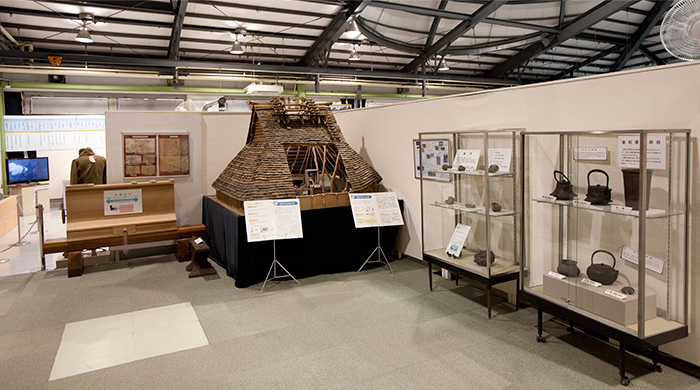
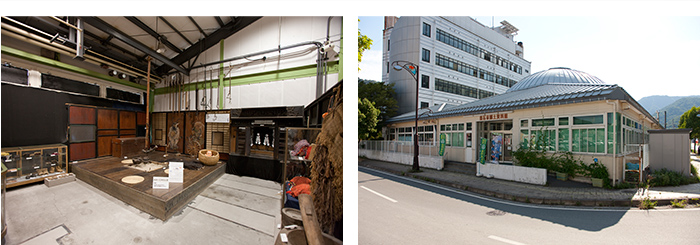
This is a citizen-built museum that displays approximately 9,000 donated items in order to pass down the history of Kamaishi. There is also an exhibit of a 2-ton furnace bottom block that was discovered near the ruins of the No. 2 blast furnace of the Hashino Iron Mine, and you can see its cut cross section.
Kamaishi Daikannon
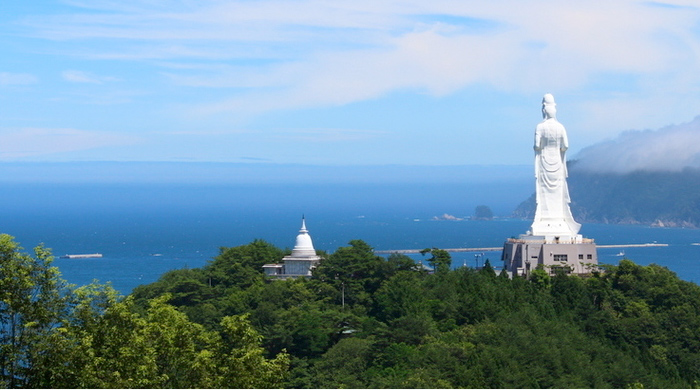
The easternmost Kannon statue in Japan stands at the tip of the Kamasaki Peninsula. Renovation work due to the earthquake was completed in December 2011, and with its beautiful white appearance and gentle smile, it continues to watch over the lives of the people of Kamaishi Port and the safety of navigation. It is 48.5m high and is divided into 13 floors, and you can enjoy a panoramic view of the Pacific Ocean at 120m above sea level from the observation deck, which is the finishing point of the Tainai Tour.
Roadside Station Kamaishi Sennin Pass

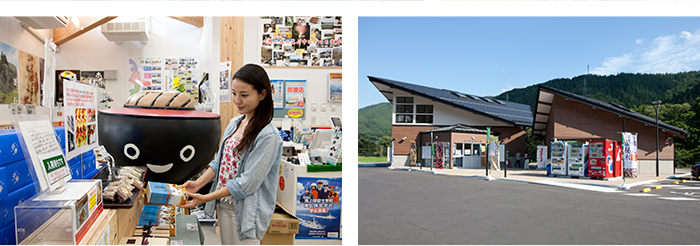
Opened on April 21, 2015 at the entrance to Sennintoge Road as a village of clear streams and Kashigaki where sweetfish dance. The most popular item is the Fujiyu soy sauce soft serve ice cream (350 yen). The soft-serve ice cream is made with local soy sauce from Kamaishi as a secret ingredient, and boasts a unique sweetness and richness with a faint soy sauce scent. If you’re feeling inspired, you can shop for local specialties such as fresh agricultural products and processed seafood products.
In autumn, the shop front is decorated with the famous “Koshigaki”, which is made by removing the astringent astringency from astringent persimmons using a method unique to the Koshi area.
Roadside Station Kamaishi Sennin Pass
- Address
- 155-4 Koshi-cho, Kamaishi City, Iwate Prefecture
- Inquiries
- 0193-27-8530
- Access
- Approximately 55 minutes by car from Kamaishi Expressway Miyamori IC, approximately 15 minutes by car from JR Kamaishi Station
- Business Hours
- Multi-purpose building 9:00-18:00, food corner 10:00-16:00 (LO), *Soft-serve ice cream available until 17:00
Closed: December 31st - January 1st
Rugby World Cup 2019 in Kamaishi
Kamaishi City has been selected as one of the 12 venues in Japan for the Rugby World Cup 2019, which will be held in Japan in four years.
The tournament has been held in rugby-traditional countries from the first tournament in 1987 to the seventh tournament in 2011, and this will be the first time it will be held in Asia.
The event will be held in Kamaishi City, which is known as the “city of steel and rugby” and is also the home of the Nippon Steel Kamaishi Rugby Club, which won the Japan Championship seven times in a row.It is expected that the event will serve as a symbol of recovery from the earthquake and serve as an opportunity for development.
- Inquiries: 0193-22-2111 (Kamaishi City, General Affairs and Planning Department, Rugby World Cup Promotion Office)
- Rugby World Cup Information




